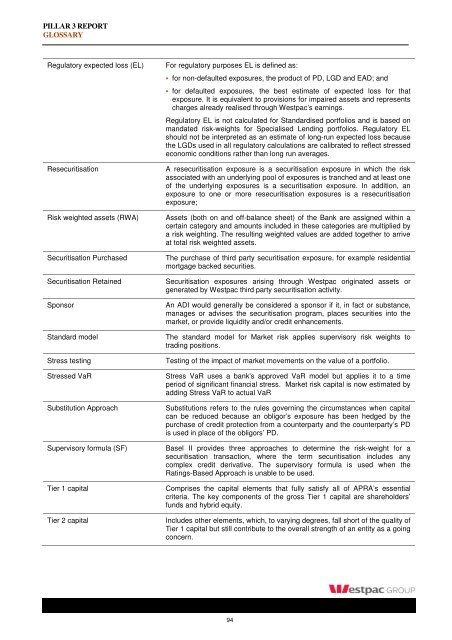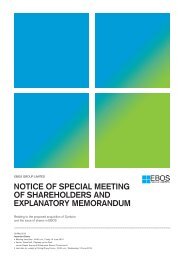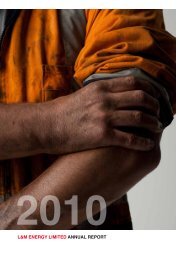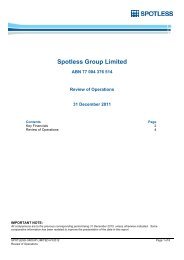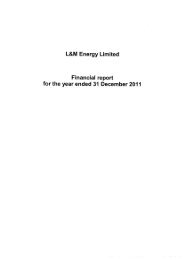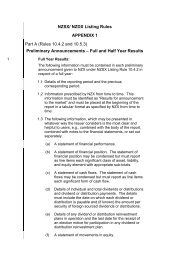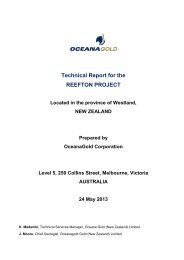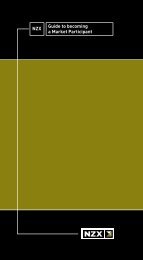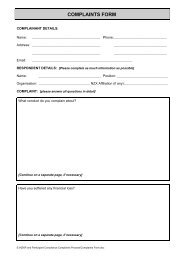Westpac Group Pillar 3 Report March 2013 - Iguana IR Sites
Westpac Group Pillar 3 Report March 2013 - Iguana IR Sites
Westpac Group Pillar 3 Report March 2013 - Iguana IR Sites
You also want an ePaper? Increase the reach of your titles
YUMPU automatically turns print PDFs into web optimized ePapers that Google loves.
PILLAR 3 REPORT<br />
GLOSSARY<br />
Regulatory expected loss (EL)<br />
Resecuritisation<br />
Risk weighted assets (RWA)<br />
Securitisation Purchased<br />
Securitisation Retained<br />
Sponsor<br />
Standard model<br />
Stress testing<br />
Stressed VaR<br />
Substitution Approach<br />
Supervisory formula (SF)<br />
Tier 1 capital<br />
Tier 2 capital<br />
For regulatory purposes EL is defined as:<br />
for non-defaulted exposures, the product of PD, LGD and EAD; and<br />
for defaulted exposures, the best estimate of expected loss for that<br />
exposure. It is equivalent to provisions for impaired assets and represents<br />
charges already realised through <strong>Westpac</strong>’s earnings.<br />
Regulatory EL is not calculated for Standardised portfolios and is based on<br />
mandated risk-weights for Specialised Lending portfolios. Regulatory EL<br />
should not be interpreted as an estimate of long-run expected loss because<br />
the LGDs used in all regulatory calculations are calibrated to reflect stressed<br />
economic conditions rather than long run averages.<br />
A resecuritisation exposure is a securitisation exposure in which the risk<br />
associated with an underlying pool of exposures is tranched and at least one<br />
of the underlying exposures is a securitisation exposure. In addition, an<br />
exposure to one or more resecuritisation exposures is a resecuritisation<br />
exposure;<br />
Assets (both on and off-balance sheet) of the Bank are assigned within a<br />
certain category and amounts included in these categories are multiplied by<br />
a risk weighting. The resulting weighted values are added together to arrive<br />
at total risk weighted assets.<br />
The purchase of third party securitisation exposure, for example residential<br />
mortgage backed securities.<br />
Securitisation exposures arising through <strong>Westpac</strong> originated assets or<br />
generated by <strong>Westpac</strong> third party securitisation activity.<br />
An ADI would generally be considered a sponsor if it, in fact or substance,<br />
manages or advises the securitisation program, places securities into the<br />
market, or provide liquidity and/or credit enhancements.<br />
The standard model for Market risk applies supervisory risk weights to<br />
trading positions.<br />
Testing of the impact of market movements on the value of a portfolio.<br />
Stress VaR uses a bank's approved VaR model but applies it to a time<br />
period of significant financial stress. Market risk capital is now estimated by<br />
adding Stress VaR to actual VaR<br />
Substitutions refers to the rules governing the circumstances when capital<br />
can be reduced because an obligor’s exposure has been hedged by the<br />
purchase of credit protection from a counterparty and the counterparty’s PD<br />
is used in place of the obligors’ PD.<br />
Basel II provides three approaches to determine the risk-weight for a<br />
securitisation transaction, where the term securitisation includes any<br />
complex credit derivative. The supervisory formula is used when the<br />
Ratings-Based Approach is unable to be used.<br />
Comprises the capital elements that fully satisfy all of APRA’s essential<br />
criteria. The key components of the gross Tier 1 capital are shareholders’<br />
funds and hybrid equity.<br />
Includes other elements, which, to varying degrees, fall short of the quality of<br />
Tier 1 capital but still contribute to the overall strength of an entity as a going<br />
concern.<br />
94


